Physical Address
304 North Cardinal St.
Dorchester Center, MA 02124
Physical Address
304 North Cardinal St.
Dorchester Center, MA 02124
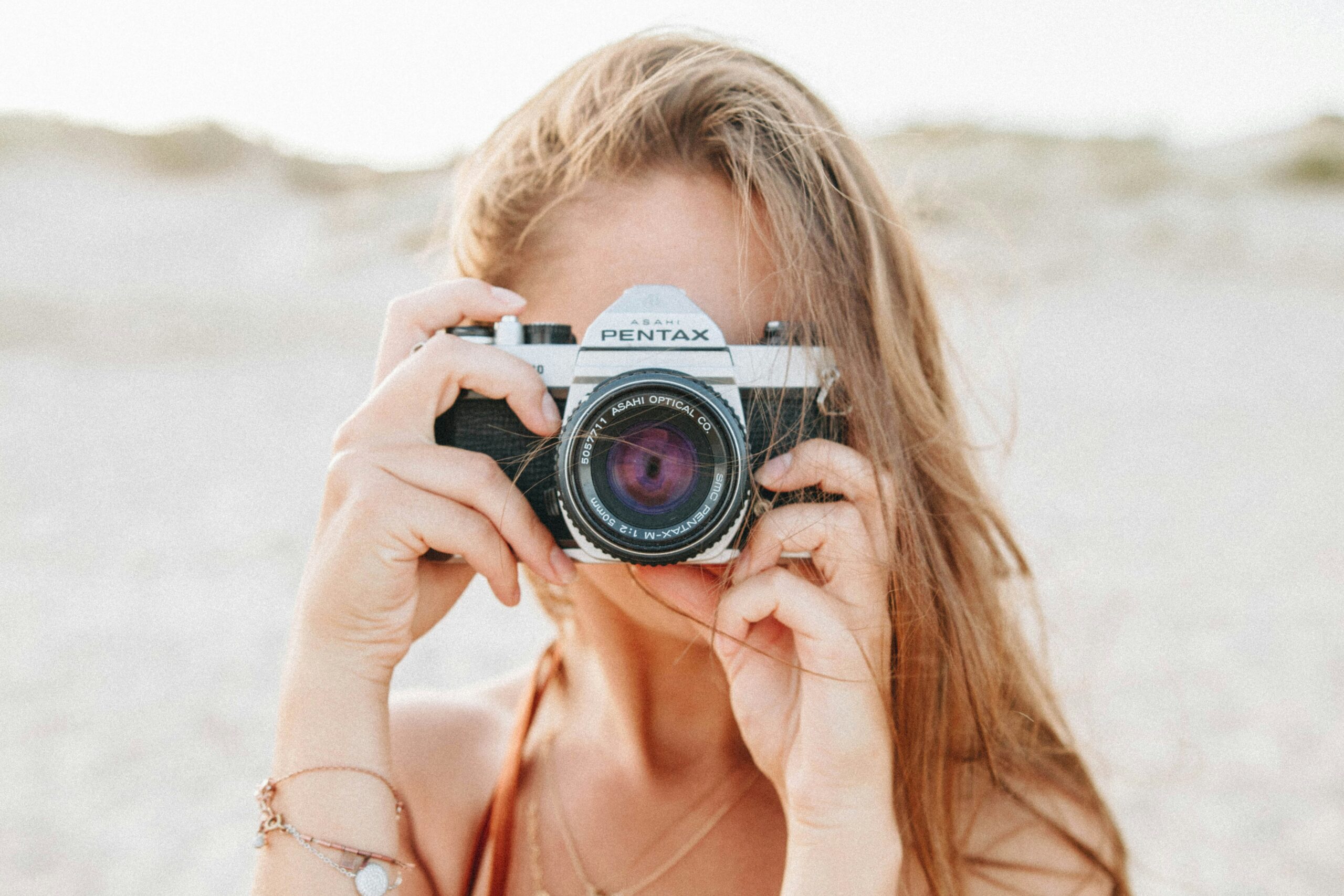
Ready to shoot film? Discover the best beginner film cameras, from the Pentax K1000 to the Canon AE-1, and learn how to choose the perfect camera for your style.
Are you ready to dive into the world of film photography? There’s something magical about shooting with film—the deliberate click of the shutter, the anticipation of developing your shots, and the joy of holding a tangible memory. Whether you’re drawn to the nostalgic feel or the artistic depth of analog photography, choosing the right film camera is the first exciting step.
In this guide, we’ll walk you through the best film cameras for beginners, covering affordable options, key features, and tips on how to get started. Let’s help you find the perfect camera to begin your film photography journey!
Before diving into camera recommendations, let’s quickly revisit why you’re choosing film in the first place. For many photographers, film offers a creative experience that digital can’t replicate. The slower pace forces you to be more deliberate, the grain and texture add a unique aesthetic, and each shot feels intentional.
Shooting film also teaches you the fundamentals of photography, from exposure to composition. There’s no “spray and pray” here—every shot matters. For beginners, learning film is one of the best ways to understand the essence of photography.
When selecting your first film camera, it’s important to focus on these key features:
Now, let’s dive into the best beginner film cameras that check all these boxes.
If you’ve done any research on beginner film cameras, the Pentax K1000 has likely appeared on your radar. This camera is famous for its simplicity, durability, and the way it teaches beginners the fundamentals of manual photography. When I first started shooting film, the K1000 was my go-to, and it still holds up today as a perfect beginner option.
One of the standout features of the Pentax K1000 is its viewfinder and built-in light meter. The viewfinder features an easy-to-read exposure needle, which helps you nail your exposure settings. As you adjust the aperture and shutter speed, the needle moves to indicate whether your shot is underexposed, overexposed, or correctly exposed. When the needle sits in the center, you’ve found the right balance, making it a fantastic learning tool for anyone new to film photography. The needle system teaches you to read light intuitively and understand how the exposure triangle works in practice.
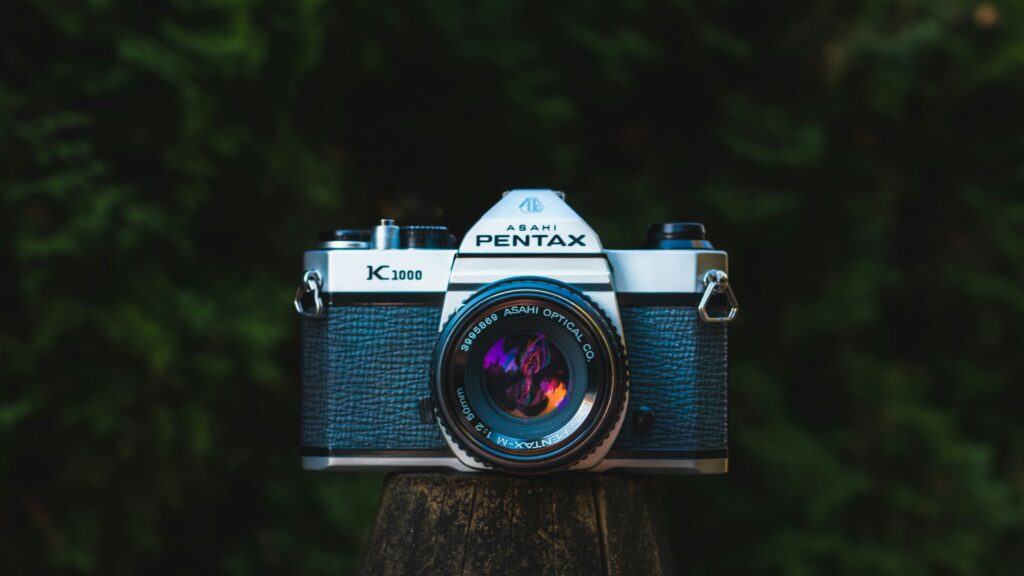
This is one of the many reasons I still have my first Pentax K1000 and why I recommend it all the time. The look, the feel, and the simplistic features make it top-notch. It’s the kind of camera that grows with you—whether you’re just starting or have been shooting film for years, it continues to be a reliable workhorse.
Why It’s Great for Beginners:
The Canon AE-1 is one of the most popular film cameras, and for good reason. It offers a mix of manual controls and automation, making it an ideal choice for those who want to ease into film photography. With an auto-exposure mode, you can let the camera handle exposure while you focus on framing and composition.
Not only do you get a great-feeling camera, but you also get the benefit of a brand name that has withstood the test of time. The Canon FD mount lenses are known for their quality, giving you access to a broad range of affordable and excellent optics. Although it can be found second-hand, it tends to come with a slightly higher price tag compared to some of the other cameras on this list, thanks to its lasting popularity and reputation.
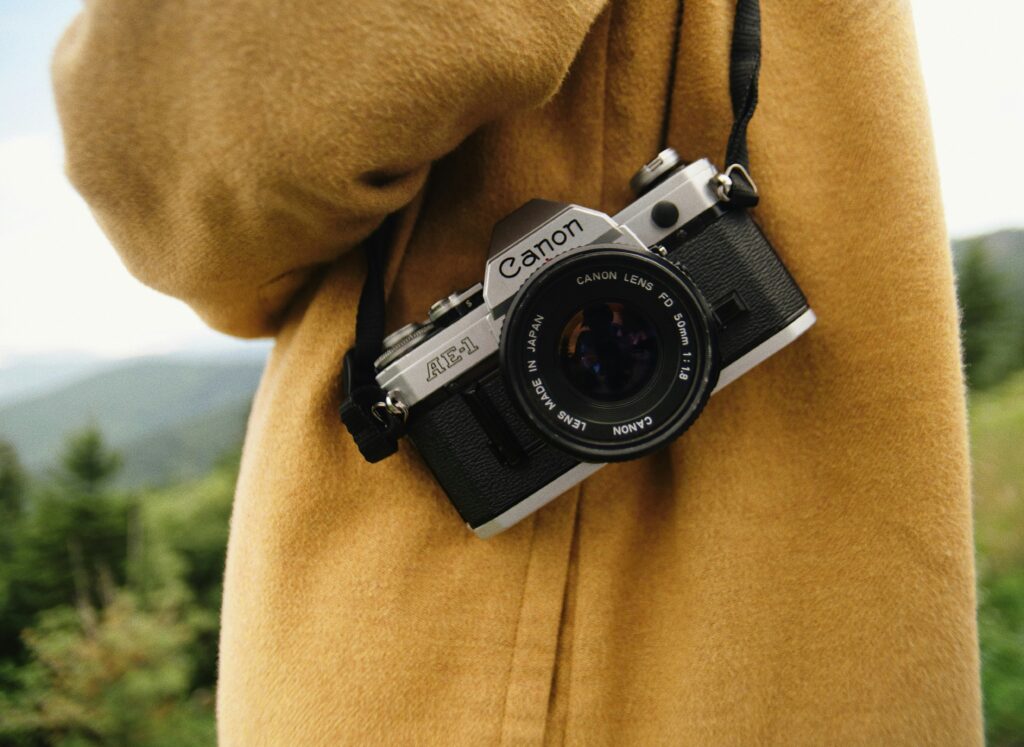
There’s also the Canon AE-1 Program, a slightly more advanced version of the AE-1 that offers additional features like full Program mode, making it even easier for beginners to get started while still delivering great performance.
Why It’s Great for Beginners:
The Nikon FM is built like a tank. With its all-metal, fully mechanical build, this camera is rugged and dependable, making it a perfect choice for photographers who want something that can handle just about any condition. Unlike some cameras that rely heavily on electronics, the Nikon FM is purely mechanical, which means it can function without batteries (though you’ll need one for the light meter). It’s the kind of camera that feels solid and reliable in your hands.
One of the standout features of the Nikon FM is its compatibility with Nikon’s F-mount lens catalog—one of the largest and most versatile lens systems available. This gives you access to a vast range of lenses, from classic manual-focus lenses to more modern glass, making the FM a camera that grows with your photography skills.
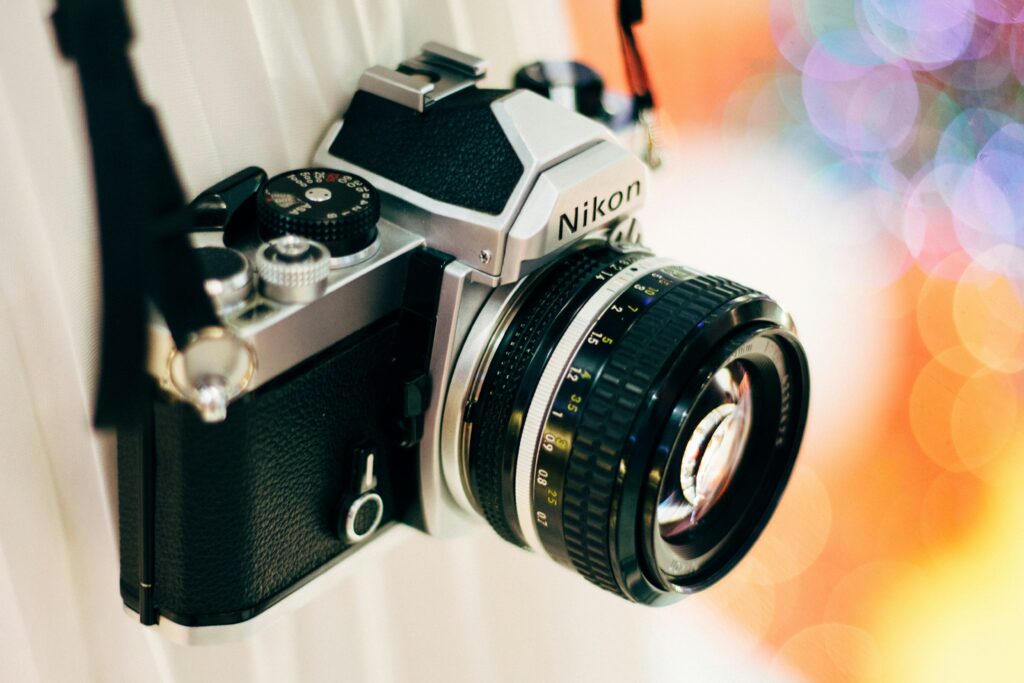
I remember the first time I got a Nikon FM in my hands. The weight of the all-metal body felt solid, exactly what you’d expect from a camera designed in the late 1970s. When I pressed the shutter for the first time, the mechanical “clunk” was unmistakable—purely analog, with no electronic sounds. It was a satisfying, tactile experience that instantly transported me to a different era of photography. The weight, the feel, and the sound made it clear that this was a camera built to last.
It’s worth noting that the Nikon FM is also the most expensive camera on this list, but the build quality and access to Nikon’s extensive lens catalog make it a solid investment for serious photographers.
Why It’s Great for Beginners:
The Konica C35 FD, often referred to as the “Poor Man’s Leica,” is an excellent choice for beginners looking for a compact rangefinder. This small yet powerful 35mm camera offers aperture-priority automatic exposure, which makes it incredibly user-friendly for those just starting out in film photography. The Konica C35 FD is well-known for producing sharp images, thanks to its high-quality Hexanon 38mm f/1.8 lens.
Every time I develop a roll shot with this camera, I’m still surprised by the image quality that comes out of such a small, compact body. The sharpness and clarity of the photos are exceptional, especially considering the modest price point. This camera is somewhat of a hidden gem and can often be found for under $100, making it a fantastic budget-friendly option for beginners and experienced photographers alike.
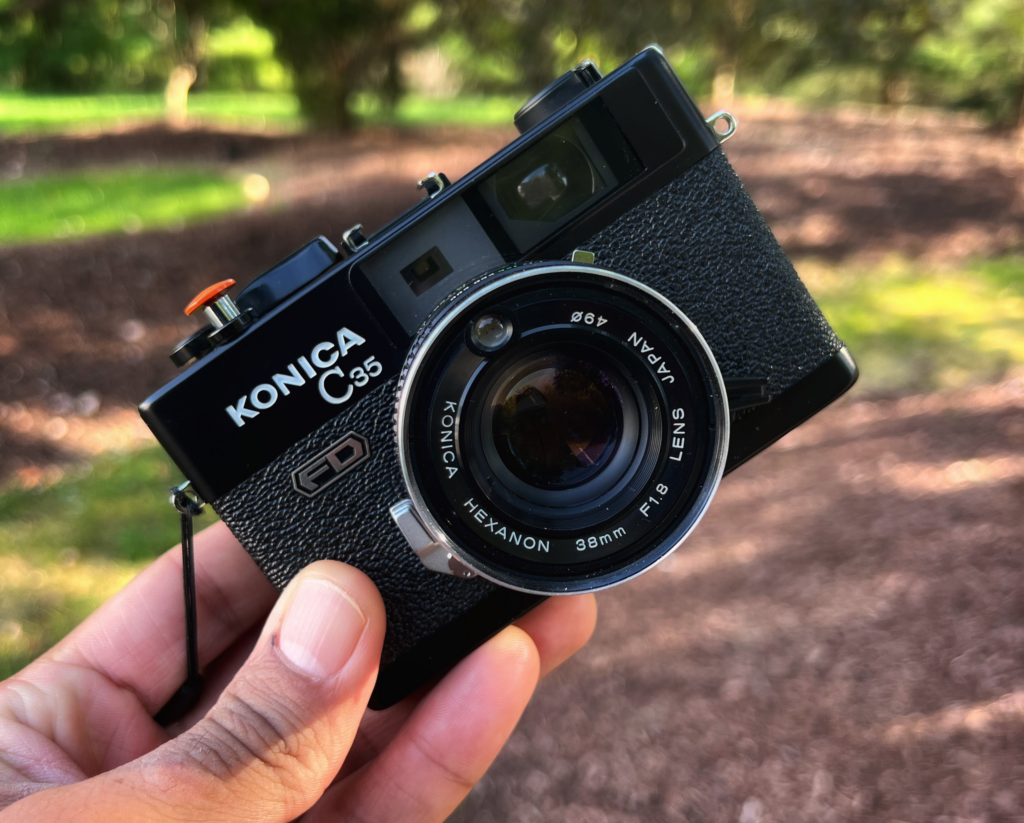
It’s worth noting that the C35 FD is a rangefinder, which can take some getting used to if you’ve primarily shot with SLRs. Additionally, you can’t change the lens or manually adjust the aperture, but the ease of use and portability make up for these limitations. Despite its quirks, I love this camera and believe it’s a great tool for all photographers, regardless of experience.
Why It’s Great for Beginners:
The Minolta X-700 is one of the film cameras I have the most experience with. Over the years, I’ve owned about 10 of them and currently have 5 in my collection. It’s a camera that has served me well, and it’s truly a perfect place to start for any beginner. One of the key advantages of the X-700 is its lightweight plastic body, which makes it much easier to carry around daily compared to older, heavier metal-bodied cameras. The trade-off, of course, is that the plastic build makes it a little more fragile, and it can be damaged more easily if not handled carefully.
The camera runs on two easily accessible batteries, which is convenient, but there’s a catch—once the batteries die, or if one of the internal capacitors goes bad, the camera won’t function. This is something to keep in mind when buying a used X-700. However, this minor downside is outweighed by the camera’s many strengths, especially when paired with the legendary Minolta glass, such as the 55mm f/1.4 lens, which produces stunningly sharp and vibrant images.

Minolta made some fantastic cameras, but I truly believe the X-700 stands out as one of their best. It offers a great balance between manual control and automation, making it ideal for beginners who want a versatile camera that can grow with them.
Why It’s Great for Beginners:
Choosing your first film camera can be a personal journey, and it’s easy to get swept up in the excitement of trying different models. Over the years, I’ve tried countless cameras and continue to explore new ones. I often find myself torn between doing it to become a better photographer or to grow as a collector. It’s an interesting balance, and I believe many photographers face this same internal debate.
The truth is, some of us are not just photographers—we’re collectors, too. And that’s okay. However, it’s important to acknowledge this separation. In the vintage camera world, it’s incredibly easy to become hooked. Buying cameras can become an addiction, especially when each one has its own unique character, history, and quirks. But if your main goal is to improve your photography skills, it’s important to be clear about your intentions.
If you’re purely looking for a camera to focus on photography, any of the options on this list will serve you well. But in my opinion, if you’re committed to learning the craft and improving your skills, I’d recommend starting with the Pentax K1000 or the Nikon FM. Both are fully manual, all-mechanical cameras that will force you to master the basics of exposure and composition.
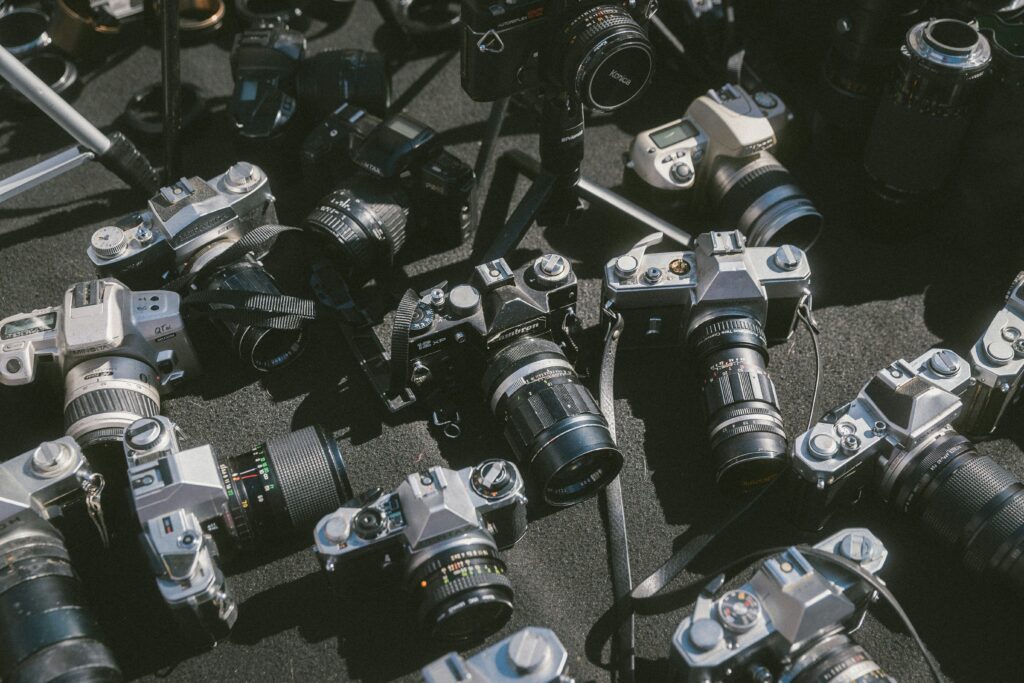
On the other hand, if you already understand shutter speed, aperture, and ISO and are simply looking to dive into film, the Canon AE-1 or the Minolta X-700 would be great choices. They offer a bit more automation without sacrificing control, allowing you to focus more on creativity and less on the technical aspects of each shot.
Lastly, if you’re craving something different, plan to do primarily street photography, or want to explore the world of rangefinders, I’d recommend the Konica C35 FD. It’s compact, easy to use, and offers a unique shooting experience compared to SLRs.
No matter what you choose, it’s important to understand your priorities—whether it’s honing your photography skills or building a collection. Both paths are rewarding, but having clarity will make your journey more enjoyable.
Starting your journey with film photography is exciting, and choosing the right camera is an important first step. Whether you go for the Pentax K1000, the versatile Canon AE-1, or something in between, you’re about to experience photography in its most intentional form. Embrace the process, experiment, and don’t be afraid to make mistakes—each shot is a chance to grow.
Are you ready to choose your first film camera? Let us know in the comments which camera caught your eye, and don’t forget to tag us on Instagram with your film photography adventures!